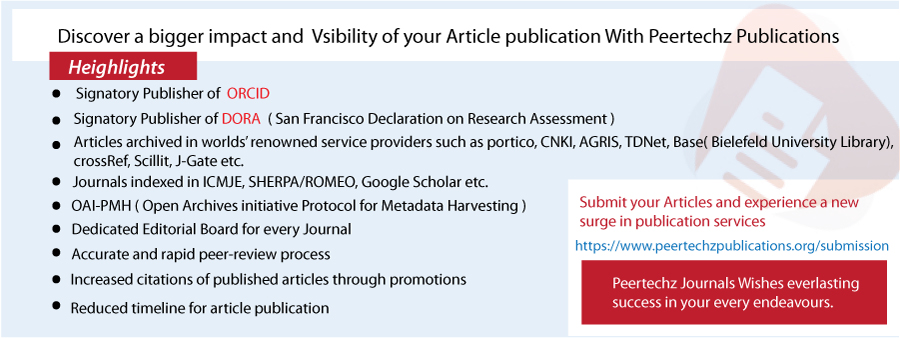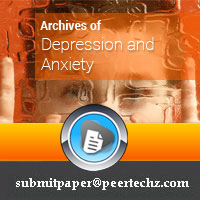Archives of Depression and Anxiety
Adult ADHD: A Comprehensive Overview of Treatment Approaches
Michel Bourin*
Neurobiology of Anxiety and Mood Disorders, University of Nantes, 98, rue Joseph Blanchart, 44100 Nantes, France
Cite this as
Bourin M. Adult ADHD: A Comprehensive Overview of Treatment Approaches. Arch Depress Anxiety. 2025;11(1):005-007. Available from: 10.17352/2455-5460.000099Copyright
© 2025 Bourin M. This is an open-access article distributed under the terms of the Creative Commons Attribution License, which permits unrestricted use, distribution, and reproduction in any medium, provided the original author and source are credited.Attention-deficit/Hyperactivity Disorder (ADHD) is one of the most prevalent neurodevelopmental conditions, affecting approximately 5% of school-aged children worldwide. Symptoms persist into adulthood in nearly 75% of cases, with adult ADHD prevalence estimated between 2% and 5% in recent studies [1]. Treatment aims to reduce the most debilitating symptoms: distractibility, difficulty sustaining attention, tendency to impulsiveness, forgetfulness, and disorganization.
Methylphenidate is the best-known and most frequently prescribed psychostimulant for the treatment of ADHD in both children and adults [2]. Other psychostimulants have demonstrated their effectiveness: dextromethylphenidate, amphetamines, dextroamphetamines, and mixtures of amphetamine salts. Generally, these psychostimulants exert their effects by blocking the presynaptic reuptake of dopamine and noradrenaline; recent studies indicate that at low doses, these drugs significantly increase catecholamine release in the prefrontal cortex [3]. At the peripheral level, they mainly exert a vasoconstrictor action and can cause a moderate increase in blood pressure and heart rate [4]. Clinical studies conducted in adults demonstrate their effectiveness in the treatment of ADHD; methylphenidate is effective for both attention deficits and hyperactivity-impulsivity symptoms [5]. The development of tolerance seems rare, but the long-term safety profile remains uncertain. As for the risk of addiction, often feared, it appears, due to certain pharmacokinetic particularities, to be extremely reduced with methylphenidate, when used according to prescribed guidelines: oral administration, at the recommended dosages (no more than 1 mg/kg) [6]. Cardiovascular diseases, severe uncontrolled hypertension, arrhythmias, severe angina pectoris, glaucoma, and hyperthyroidism represent the main contraindications for psychostimulants [7]. In cases of drug dependence, treatment with methylphenidate is often complicated and less effective. However, some studies conducted in subjects dependent on cocaine or under methadone treatment are encouraging, indicating an improvement in ADHD symptoms, as well as a reduction in cravings for substances [8].
Other psychotropic drugs may also be prescribed; atomoxetine has been approved by the FDA for the treatment of adult ADHD, and its therapeutic effect has been demonstrated in several controlled studies [9]. It selectively inhibits the presynaptic reuptake of noradrenaline [10]. Bupropion, both an antidepressant and a psychostimulant, inhibits the neuronal reuptake of dopamine and noradrenaline; controlled studies have demonstrated its effectiveness in the treatment of ADHD [11], a benefit that, to date, has not been demonstrated for venlafaxine, an antidepressant that inhibits the reuptake of serotonin and noradrenaline. These antidepressants may be useful when ADHD is associated with a depressive episode or when the prescription of a psychostimulant is contraindicated. The efficacy of selective serotonin reuptake inhibitors in the treatment of ADHD has not been established.
Modafinil has been shown to be effective and superior to placebo [12]. Its mechanism of action remains unclear, as it does not directly influence dopamine or norepinephrine release, but it may decrease GABAergic neurotransmission [13]. Clonidine and guanfacine are α2A-adrenergic receptor agonists that modulate presynaptic and postsynaptic noradrenergic activity. They are sometimes used when other substances have been ineffective [14]. Pemoline was withdrawn from the market by the FDA due to the risk of hepatotoxicity. Some studies have shown improvement in symptoms, including cognitive performance, using transdermal nicotine patches [15]. Caffeine appears to have limited efficacy based on the few studies conducted in children and adults; however, some adults with ADHD report improved concentration following caffeine intake [16].
A systematic review and network meta-analysis by intervention components [17]
However, the benefit-risk balance of available therapeutic interventions remains uncertain. Knowing this, in a study recently published by the Lancet, an English team wanted to synthesize the available data in terms of effectiveness and acceptability of pharmacological, psychological, and neurostimulation treatments in ADHD in adults.
The study authors conducted a comprehensive database search for Randomized Controlled Trials (RCTs) exploring pharmacological and non-pharmacological interventions for adult ADHD, from database inception until September 6, 2023. At least two researchers independently screened the registries and extracted data from eligible RCTs.
Trials comparing interventions versus control or any other validated symptomatic intervention were included. Pharmacotherapies were taken into account only if the planned maximum doses respected international recommendations. The duration of the trial was to be at least one week for drug treatment, four sessions for psychotherapies, and any duration deemed appropriate for neurostimulation. Concerning drug treatment, brain training and neurostimulation alone, only double-blind RCTs were included in the analysis.
Around fifty treatments were reviewed
The main endpoints were the effectiveness and acceptability of the treatment, assessed respectively by the change in severity of ADHD symptoms (self- and clinician assessment at 12 weeks), and discontinuation for any reason. Standardized Mean Differences (SMDs) and Odds Ratios (ORs) were estimated using pairwise random-effects models and network analysis, by categorizing interventions into specific therapeutic components.
Of the 32,416 studies screened, 113 unique RCTs involving 14,887 participants were included in the final analysis. The RCTs studied pharmacotherapies (55.8% of 113 RCTs), psychotherapies (24.8%), neurostimulatory and neurofeedback therapies (8.8%), and control groups (85.8% of 113 RCTs).
Some medications are effective, but not without side effects
The analysis showed a glaring lack of studies exploring the medium and long-term effects of drug therapies. Stimulants, including methylphenidate, dextromethylphenidate, and mixed amphetamine salts (SMD self-rated symptoms -0.39 [95% CI -0.52 to -0.26]; clinician-rated symptoms -0.61 [-0.71 to -0.51]) and atomoxetine (self-rated symptoms DMS -0.38 [-0.56 to -0.21]; clinician-rated symptoms DMS -0.51 [-0.64 to -0.37]) were the only therapeutic interventions associated with a beneficial effect in reducing ADHD symptoms in the short term, supported by both self-reports and clinician assessments. However, atomoxetine was followed by more treatment interruptions than placebo (OR 1.43 [95% CI 1.14 to 1.80]), as well as guanfacine (3.70 [1.22 to 11.19]). The effectiveness of non-pharmacological interventions varied depending on the type of symptom assessment: cognitive behavioral therapy, cognitive remediation, mindfulness, psychoeducation, transcranial direct current stimulation was more effective than placebo only on assessment by the clinician. Hence, future research should incorporate both self-reports and clinician assessments. Regarding secondary outcomes, only stimulants demonstrated efficacy in managing emotional dysregulation, often considered a debilitating symptom, has been proposed as a potential core feature of ADHD.
Unlike findings in children, neither medications nor cognitive training proved effective in improving executive dysfunction in adults. Finally, regarding quality of life, evidence supporting an intervention-specific effect at 12 weeks was minimal.
To date, this is one of the most comprehensive meta-analyses of available evidence for different therapeutic interventions in ADHD. Overall, additional long-term studies of alternative medications, non-pharmacological strategies, and their combinations are required to guide more effective management strategies for adult ADHD.
- Bourin M. Attention Deficit Hyperactivity Disorder (ADHD) in Adults: A Mini Review. SAR J Psychiatry Neurosci. 2023;4:5-8. Available from: https://scispace.com/pdf/attention-deficit-hyperactivity-disorder-adhd-in-adults-a-wb4kwsc5.pdf
- Storebø OJ, Pedersen N, Ramstad E, Kielsholm ML, Nielsen SS, Krogh HB, et al. Methylphenidate for attention deficit hyperactivity disorder (ADHD) in children and adolescents - assessment of adverse events in non-randomised studies. Cochrane Database Syst Rev. 2018;5(5):CD012069. Available from: https://doi.org/10.1002/14651858.cd012069.pub2
- Berridge CW, Devilbiss DM. Psychostimulants as cognitive enhancers: the prefrontal cortex, catecholamines, and attention-deficit/hyperactivity disorder. Biol Psychiatry. 2011;69(12):e101-11. Available from: https://doi.org/10.1016/j.biopsych.2010.06.023
- Wilens TE, Hammerness PG, Biederman J, Kwon A, Spencer TJ, Clark S, et al. Blood pressure changes associated with medication treatment of adults with attention-deficit/hyperactivity disorder. J Clin Psychiatry. 2005;66:253-9. Available from: https://doi.org/10.4088/jcp.v66n0215
- Jaeschke RR, Sujkowska E, Sowa-Kućma M. Methylphenidate for attention-deficit/hyperactivity disorder in adults: a narrative review. Psychopharmacology (Berl). 2021;238:2667-91. Available from: https://doi.org/10.1007/s00213-021-05946-0
- Volkow ND, Swanson JM. Variables that affect the clinical use and abuse of methylphenidate in the treatment of ADHD. Am J Psychiatry. 2003;160:1909-18. Available from: https://doi.org/10.1176/appi.ajp.160.11.1909
- Golmirzaei J, Mahboobi H, Yazdanparast M, Mushtaq G, Kamal MA, Hamzei E. Psychopharmacology of Attention-Deficit Hyperactivity Disorder: Effects and Side Effects. Curr Pharm Des. 2016;22:590-4. Available from: https://doi.org/10.2174/1381612822666151124235816
- Pérez de los Cobos J, Siñol N, Pérez V, Trujols J. Pharmacological and clinical dilemmas of prescribing in co-morbid adult attention-deficit/hyperactivity disorder and addiction. Br J Clin Pharmacol. 2014;77:337-56. Available from: https://doi.org/10.1111/bcp.12045
- Ravishankar V, Chowdappa SV, Benegal V, Muralidharan K. The efficacy of atomoxetine in treating adult attention deficit hyperactivity disorder (ADHD): A meta-analysis of controlled trials. Asian J Psychiatr. 2016;24:53-8. Available from: https://doi.org/10.1016/j.ajp.2016.08.017
- Kratochvil CJ, Vaughan BS, Harrington MJ, Burke WJ. Atomoxetine: a selective noradrenaline reuptake inhibitor for the treatment of attention-deficit/hyperactivity disorder. Expert Opin Pharmacother. 2003;4:1165-74. Available from: https://doi.org/10.1517/14656566.4.7.1165
- Stahl SM, Pradko JF, Haight BR, Modell JG, Rockett CB, Learned-Coughlin S. A review of the neuropharmacology of bupropion, a dual norepinephrine and dopamine reuptake inhibitor. Prim Care Companion J Clin Psychiatry. 2004;6:159-66. Available from: https://doi.org/10.4088/pcc.v06n0403
- Wang SM, Han C, Lee SJ, Jun TY, Patkar AA, Masand PS, et al. Modafinil for the treatment of attention-deficit/hyperactivity disorder: A meta-analysis. J Psychiatr Res. 2017;84:292-300. Available from: https://doi.org/10.1016/j.jpsychires.2016.09.034
- Hersey M, Tanda G. Modafinil, an atypical CNS stimulant? Adv Pharmacol. 2024;99:287-326. Available from: https://doi.org/10.1016/bs.apha.2023.10.006
- Venables M, Ntzani E, Hsia Y, Gillies D. Alpha2 adrenergic agonists for attention deficit hyperactivity disorder (ADHD). Cochrane Database Syst Rev. 2017;2017(1):CD010016. Available from: https://doi.org/10.1002/14651858.CD010016.pub2
- Majdi A, Sadigh-Eteghad S, Gjedde A. Effects of transdermal nicotine delivery on cognitive outcomes: A meta-analysis. Acta Neurol Scand. 2021;144:179-91. Available from: https://doi.org/10.1111/ane.13436
- Vázquez JC, Martin de la Torre O, López Palomé J, Redolar-Ripoll D. Effects of caffeine consumption on attention deficit hyperactivity disorder (ADHD) treatment: A systematic review of animal studies. Nutrients. 2022;14(4):739. Available from: https://doi.org/10.3390/nu14040739
- Ostinelli EG, Schulze M, Zangani C, Farhat LC, Tomlinson A, Giovane CD, et al. Comparative efficacy and acceptability of pharmacological, psychological, and neurostimulatory interventions for ADHD in adults: a systematic review and component network meta-analysis. Lancet Psychiatry. 2025;12:32-43. Available from: https://www.thelancet.com/journals/lanpsy/article/PIIS2215-0366(24)00360-2/fulltext
Article Alerts
Subscribe to our articles alerts and stay tuned.
 This work is licensed under a Creative Commons Attribution 4.0 International License.
This work is licensed under a Creative Commons Attribution 4.0 International License.


 Save to Mendeley
Save to Mendeley
